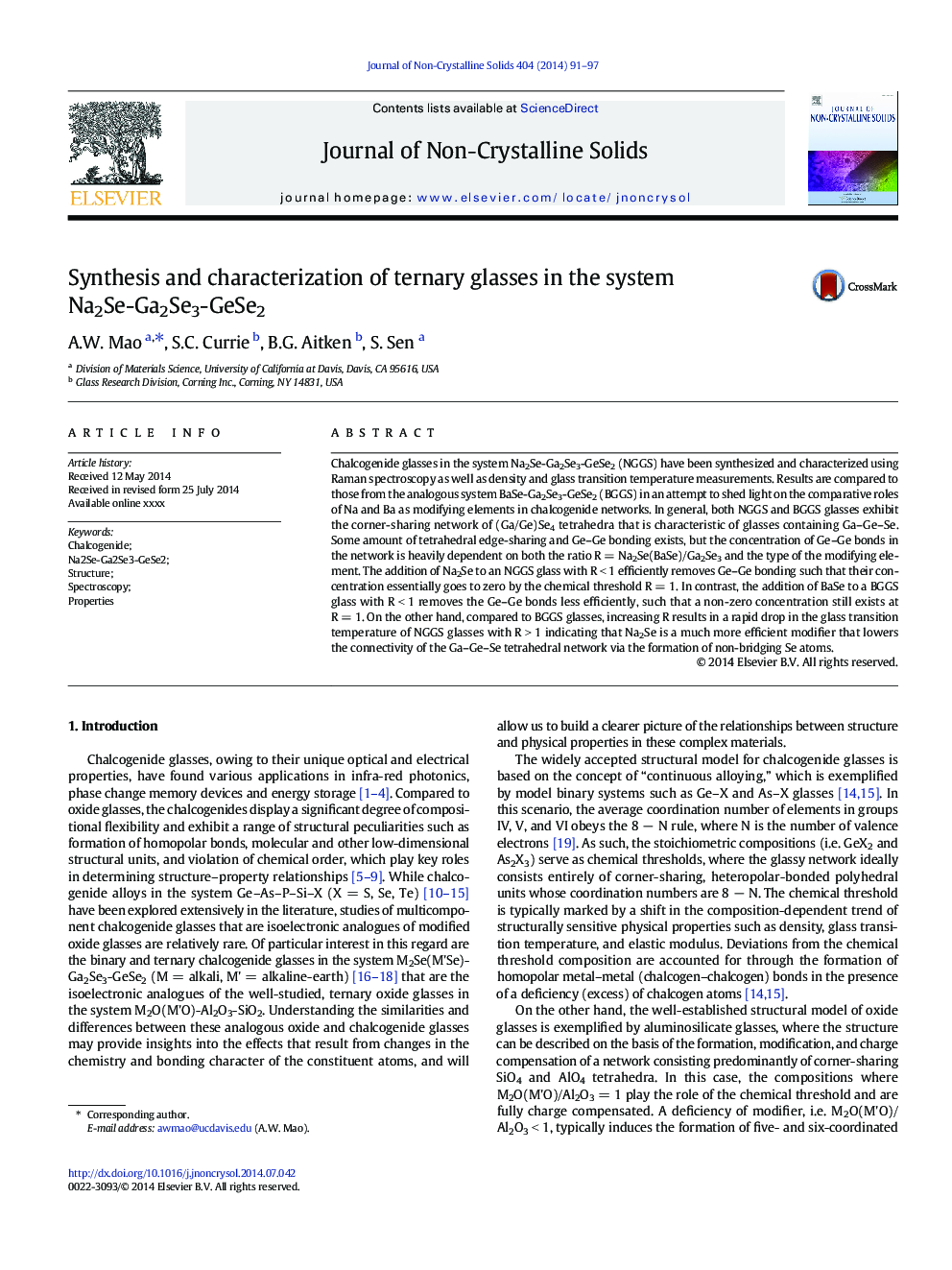| Article ID | Journal | Published Year | Pages | File Type |
|---|---|---|---|---|
| 7901691 | Journal of Non-Crystalline Solids | 2014 | 7 Pages |
Abstract
Chalcogenide glasses in the system Na2Se-Ga2Se3-GeSe2 (NGGS) have been synthesized and characterized using Raman spectroscopy as well as density and glass transition temperature measurements. Results are compared to those from the analogous system BaSe-Ga2Se3-GeSe2 (BGGS) in an attempt to shed light on the comparative roles of Na and Ba as modifying elements in chalcogenide networks. In general, both NGGS and BGGS glasses exhibit the corner-sharing network of (Ga/Ge)Se4 tetrahedra that is characteristic of glasses containing Ga-Ge-Se. Some amount of tetrahedral edge-sharing and Ge-Ge bonding exists, but the concentration of Ge-Ge bonds in the network is heavily dependent on both the ratio RÂ =Â Na2Se(BaSe)/Ga2Se3 and the type of the modifying element. The addition of Na2Se to an NGGS glass with RÂ <Â 1 efficiently removes Ge-Ge bonding such that their concentration essentially goes to zero by the chemical threshold RÂ =Â 1. In contrast, the addition of BaSe to a BGGS glass with RÂ <Â 1 removes the Ge-Ge bonds less efficiently, such that a non-zero concentration still exists at RÂ =Â 1. On the other hand, compared to BGGS glasses, increasing R results in a rapid drop in the glass transition temperature of NGGS glasses with RÂ >Â 1 indicating that Na2Se is a much more efficient modifier that lowers the connectivity of the Ga-Ge-Se tetrahedral network via the formation of non-bridging Se atoms.
Related Topics
Physical Sciences and Engineering
Materials Science
Ceramics and Composites
Authors
A.W. Mao, S.C. Currie, B.G. Aitken, S. Sen,
